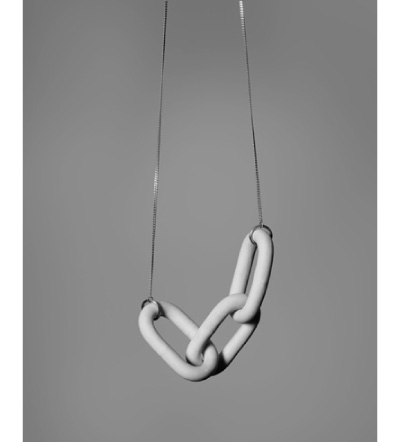
The Ancient Hebrew Conception of the Universe (All images by Michael Paukner) (Click Image to Enlarge)
 Michael Paukner
Michael Paukner’s infographics go beyond the usual function of the form: his original collection of posters titled “See The Bigger Picture” range from straight-faced renderings of crop circles and planetary “energy grid theory” to stunningly simple illustrations of the Pythagorean theorem or the mathematical golden ratio as expressed by planetary orbits.
The range is profound but the style remains the same: clean, elegant, and, above all, informative. But what Paukner chooses to inform us about is, more often than not, a piece of arcane legend or a pseudoscientific theory that few of us have ever heard of. Paukner explains, “It all began when a drunk guy behind a bar told me about Planet X and 2012 some years ago.… I bought some books and found some other topics like ancient knowledge, religion, old prophecies, crop circles, and other mind-blowing facts and theories. I started to feel like Fox Mulder, always searching for the truth out there.”
Several years later, Paukner’s Flickr page has registered millions of views in only six months, and he’s been the subject of features in several design magazines. Paukner is no stranger to fame — he’s also the lead singer of the popular Austrian band Excuse Me Moses, whose last album leaped to #13 on the Austrian charts — but the success of these graphics was very unexpected to him.
(more…)




Eating meals on the run is a reality of the urban lifestyle. Disposable take-out containers have become similarly embedded into our visual landscape — popping awkwardly out of garbage containers, littering streets, land, and oceans. As someone who has worked in the restaurant delivery business, I know how frustrating it can be to facilitate disposability at its peak; stock rooms full of plastic that will be used for just a brief instant, only to be thrown in the trash. Increased environmental damage from plastic bags and the rising cost of petrol-based products present an acute need for take-out packaging that doesn’t raise environmental red flags
The design solution is surprisingly simple and low tech, according to Israeli designer Tal Marco’s brilliant Banana Leaf packaging alternative featured in Designboom’s “Dining in 2015” design competition. The banana leaf wrap is a renewable package that utilizes ancient food preserving techniques from India and South East Asia, and innovative design to address modern environmental waste issues.
Marco is a designer that sees sustainable potential in the present. Instead of making more stuff, he looks to a by-product trashed in the Western world during agricultural production. He takes the banana leaf’s already waxy, flexible surface and puts it to new use in the tradition of up-cycling. According to Marco, the design uses no glue, and is adaptable to any product because the banana leaves are die-cut for easy opening along their natural edges. Marco’s banana leaf package design is a sustainable solution at it’s best, employing the principles of up-cycling existing materials and recycling cultural wisdom.
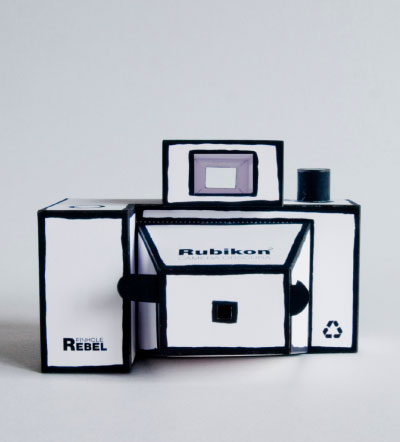

In the digital age, photographs are everywhere and all the world has a camera. At the same time, classical photography is being forgotten and, consequently, has become even more expensive as pixels replace actual film.
Here to remind us of photography’s most rudimentary origins is Czech designer Jaroslav Jurica and his “Rubikon Pinhole Rebel”. Published under a Creative Commons license in PDF format, anyone with access to the internet and a printer can print out and glue together the pieces to form a functioning pinhole camera.
A pinhole camera, whether made of paper or plastic, is essentially a hand-held camera obscura. Latin for “dark room”, the term camera obscura refers to the premodern discovery that when light was filtered into a dark room through a small aperture, images would be projected upside-down onto an opposing wall or screen. Aristotle, da Vinci, and Chinese and Arabic philosophers dating back to the tenth century B.C. understood and wrote about the phenomenon that laid the groundwork for modern image-making.
Thanks to the Rubikon Pinhole Rebel, three thousand years later the haunting, unexpected beauty of simple photography is made as easy for us to explore as it was for the ancients.
(more…)
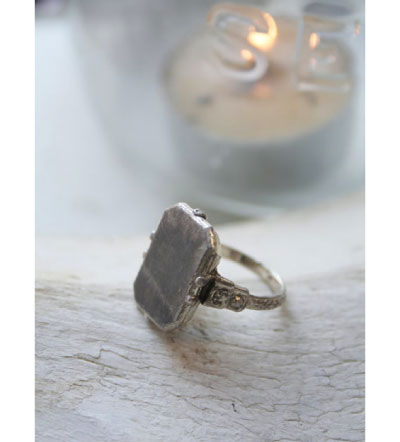

Irish designer Bernice Kelly launched Macha jewelry (named after her hometown in Northern Ireland) in 2007. Pretty without being too precious, the London-based line offers incredible rings and humble necklaces in simple materials like silver, gold plate, and gemstones. To craft her accessories (many of them unisex), Kelly antiques and textures the pieces for a worn-in look. It’s an aesthetic that sometimes renders pieces a little imperfect; a few designs are even fashioned by starting with an accidental shape or a carving mistake. But Kelly calls her vintage-inspired jewelry “classics of the future”. And some of these handmade pieces are even a little whimsical: crab-claw cufflinks, molar-shaped pendants, sterling silver rings shaped like string knots. Kelly’s own photography reveals the intricacies of the pieces. One ring boasts a huge nugget of a gemstone – or does it? Upon closer look, the stone is actually a ridged chunk of metal, set like a diamond. Past collections have drawn on diverse, historical contexts, more industrious than elegant, from the American roadtrip to Victorian mining. And as a label, Macha is truly about the work, quality over an image or a pretense. The modern brand regularly posts its newest, modestly hewn pieces on its Facebook page. Lately, Kelly has been advertising her chunky-stoned rings for Valentine’s Day.
(more…)
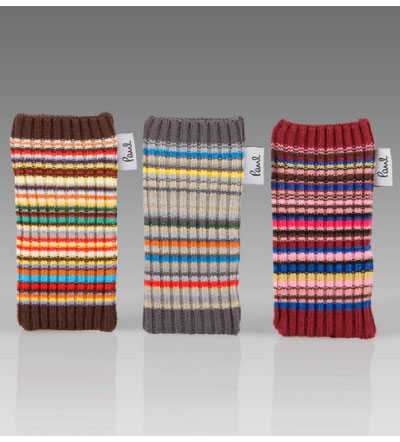

In his three decades of designing, Paul Smith has teamed up with everyone from Oakley and Burton to Triumph Motorcycles. Now the British designer has released a collaborative partnership with Apple. The Paul Smith for Apple “luggage and accessory “ capsule collection includes leather iPhone and iPod cases; Mini Cooper Macbook sleeves and shoulder bags; and knit iPod socks with Smith’s signature multistripe pattern. The bags, cases, and sleeves are available in different sizes to accommodate different kinds of Macbooks and iPods, and sturdy materials and stitching keep your valuable electronics safe. Impressively, the menswear icon has found another way to keep his designs relevant for a new generation. Smith stays true to form with this small line, utilizing classic shapes and simple leathers, and injecting his own personality with bright colors.
(more…)


There’s a distinctive project in the works to bring sustainable development to developing countries, and it combines two things rarely found in the same sentence: bamboo and bicycles. The Bamboo Bike Project aims to help people in impoverished countries by teaching them how to make their own bikes out of — that’s righ t— bamboo.
Bamboo is the largest member of the grass family and the fastest growing plant on earth (shoots can grow more than two feet per day). The self-replenishing speed with which it grows makes it an ideal and sustainable construction material in impoverished, tropical countries. Or anywhere for that matter. It’s also exceptionally strong, and makes a surprisingly lightweight bicycle. Co-founders John Mutter and David Ho initially learned to make the bikes from a man who wanted to sell the bikes as a boutique item to wealthy customers. Rather than keep the bamboo bikes a niche item, Mutter says, “Our objective is to make them in large numbers and sell them for as little as possible.”
“I’ve been to Africa and some other poor places,” continues Mutter, “and if you’ve ever been to a place like that you realize that while bicycles [in rich countries] are just sort of personal transportation and a means of getting exercise, anywhere where incomes are low they represent a lot more than that.”
(more…)

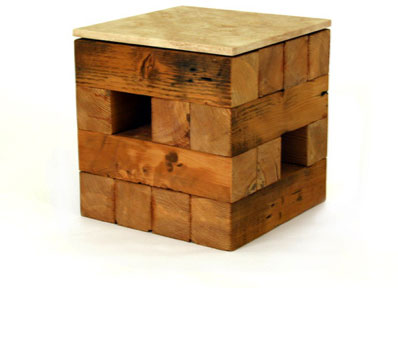
Photography courtesy of Viesso

Los Angeles has always had a knack for turning one man’s trash into another man’s table. Fortunately, custom furniture gurus, Viesso, know how to make it look great too. Constructed entirely out of reclaimed wood beams salvaged from rundown LA buildings, Viesso’s new Koper table is an eco-savvy cross between Jenga and a Rubik’s Cube. Fun, earthy, and versatile, the Koper has a certain charm not typically attributed to home furnishings. Viesso is something of a pioneer in furniture design, reconstructing the entire shopping process by encouraging individuality, efficiency, and smart innovation. Far from sifting through a showcase full of generic furniture, each table, sofa, and bed is customizable, offering earth-friendly options and materials. To further reiterate Viesso’s commitment to the planet, all products are manufactured locally. True to Viesso form, the Koper table ranges in sizes from 16” X 16” to 36” X 36”, with the option of a marble top. Custom tables start at $244.
(more…)

When Uncommon Matters debuted its line of couture porcelain accessories, designers Amelie Riech and Jana Patz cheekily complemented the showroom installation with a soundtrack of breaking and clattering porcelain to underscore the fragility of their award-winning designs. The “Handle with Care” collection, as it is called, adeptly merges the idea of traditional crafts and materials taking shape to become an entirely new, modern creation.
A man’s stiff shirt collar, for instance, becomes the inspiration for a series of platinized neckpieces, creating striking — and reflective — accessories that could perhaps be seen as a variation on the “boyfriend shirt” look. An entirely porcelain necklace, on the other hand, is designed with chain links in mind, and delicately clinks and clanks when in motion. Chunky porcelain bracelets and sleek neck cuffs round out the product line, which has continually graced the pages of many a fashion editorial in 2009.
(more…)
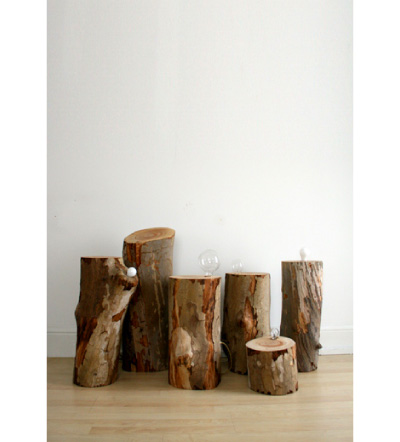

Given the current emphasis on green design, it’s only natural that the tree stump should find its way into home décor and furniture design. Wood stumps have been a recent source of content for DIY bloggers and designers, and have even been co-opted by retail furniture stores like West Elm (in gold, of course). But Stephanie Beamer, co-founder of the all-girl furniture design crew Egg Collective, insists that their designs, including a stump side-table lamp, are rooted in architecture and are more about functionality and form than about following green trends. Citing pre-Danish modernism and French Art Deco styles, Beamer views furniture design “as a microcosm of the whole that is architecture.”
The Egg Collective girls first met in wood shop while in architecture school in St. Louis. Upon encouragement from a professor, the ladies teamed up to begin creating innovative furniture pieces centered around ideas and creativity, not commerce and mass production. Following a particularly nasty series of storms in St. Louis, the Collective used fallen sycamore trees from local parks to create a series of limited edition side-table lamps that have since generated consistent buzz.
(more…)
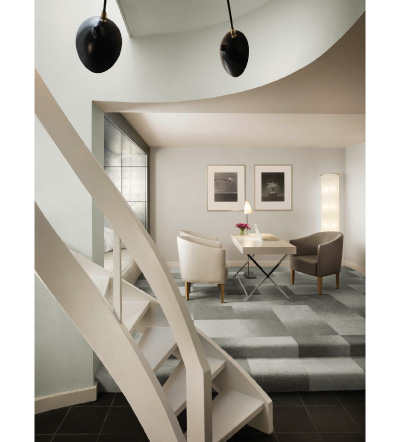
Nicholas Koening courtesy of Morgan Hotel

You see the influence of some people every day: Gandhi and the idea of peace, President Obama and the soon-to-be-sweeping health care reform, Carl Sagan and the thought of ourselves as small. All pretty big ideas. What you may not see or realize is that there are people who very directly influence the way you dress, the way your favorite store is decorated, and the fact that you can get away with a tie and jeans in this day and age. Enter Andrée Putman. Blending the high and the low into a beautifully unique and practical product, Putman describes her own best works as “the perfect balance between discipline and revolt.”
Rizzoli Publications has released a definitive look, Andrée Putman: Complete Works, at the woman who in the 1980s brought to light the idea of high-end chic mixing with plebeian materials. Her career includes redesigning hotels, department stores, residences, and, recently, an entire thirty-one floor apartment skyscraper in Hong Kong, as well as a plethora of product design.
The book, written by Donald Albrecht (curator of architecture and design at The Museum of the City of New York) and Jean Nouvel (award-winning architect) offer the ultimate look at all of her works in a staggeringly winsome package: perfectly-square, minimal, robust in content, and all-around attractively built — just as Andrée would want.
(more…)





 Facebook
Facebook Permalink
Permalink Digg
Digg Reddit
Reddit LinkedIn
LinkedIn StumbleUpon
StumbleUpon Tumblr
Tumblr








